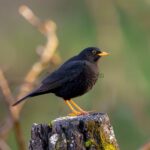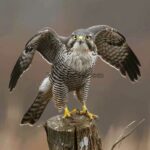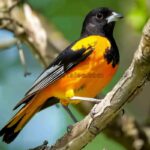Duck Species and Varieties
Ducks are a fascinating group of birds with a wide variety of species.
Each type of duck has unique features and behaviors.
Let’s dive into the world of ducks and explore their different types.
Dabbling Ducks
Dabbling ducks are the charmers of the duck world.
They feed by tipping forward in the water, leaving their tails sticking up.
This funny feeding method allows them to reach plants and insects just below the water’s surface.
Common dabbling ducks include:
- Mallard: Recognizable with its green head and bright orange feet, the mallard is often found in ponds and parks. These ducks are not shy and can be seen swimming and dabbling near humans.
- Northern Pintail: With its sleek body and pointed tail, the northern pintail is a graceful sight. They prefer shallow waters and are known for their long migrations.
Dabbling ducks have broad bills, perfect for filtering food from water.
Their feet are placed centrally on their bodies, making them excellent swimmers.
They can also walk well on land, making them versatile in their habitats.
The American robin is a well-known bird in North America, easily recognized by its reddish-orange breast and cheery song.
Diving Ducks
Diving ducks are the adventurers of the duck realm.
Unlike dabblers, they go fully underwater to forage.
They have powerful legs set further back on their bodies, which makes them agile swimmers but awkward on land.
Notable diving ducks include:
- Canvasback: Known for its distinctive sloping profile and red eyes, the canvasback dives deep to find aquatic plants and small animals.
- Redhead: With its bright red head and gray back, the redhead is easy to spot. They are often found in large flocks on lakes and coastal waters.
Diving ducks are heavier than dabblers, which helps them stay submerged while hunting for food.
Their feeding strategy requires strong muscles and excellent underwater vision.
Perching Ducks
Perching ducks are the acrobats among ducks.
They have strong claws that allow them to grip branches and other surfaces.
These ducks are often found in wooded areas near water.
Examples include:
- Wood Duck: This colorful bird is known for its iridescent plumage and distinctive call. Wood ducks nest in tree cavities and can be seen perching on branches over water.
- Mandarin Duck: With its striking colors and unique shape, the mandarin duck is a visual delight. Native to East Asia, these ducks are often found near ponds and streams.
Perching ducks are adaptable and can live in various habitats, from forests to urban parks.
Their ability to perch makes them unique among ducks.
The common blackbird (Turdus merula) is a widespread songbird known for its distinct appearance and melodious song. Found across Europe,…
Duck Behavior and Habits
Ducks exhibit a wide range of behaviors, from their feeding strategies to their social interactions.
Understanding these habits gives us insight into their daily lives.
Feeding Habits
Ducks are omnivores, meaning they eat both plants and animals.
Their diet includes grasses, aquatic plants, insects, small fish, and even small amphibians.
Feeding methods vary among species:
- Dabbling: Dabbling ducks skim the surface of the water, eating plants and insects just below the surface. They often feed in shallow waters where they can easily tip forward.
- Diving: Diving ducks submerge completely to find food. They search for fish, crustaceans, and aquatic plants. This method requires good diving skills and strong swimming muscles.
Ducks use their broad bills to filter food from water.
The bill has comb-like structures called lamellae, which help trap food while letting water escape.
The common blackbird (Turdus merula) is a widespread songbird known for its distinct appearance and melodious song. Found across Europe,…
Breeding and Nesting
Ducks have interesting breeding behaviors.
They are generally monogamous for a season, forming pairs that stay together until the eggs are hatched.
Key points about their breeding and nesting habits:
- Nesting: Female ducks build nests in safe, hidden spots. Nests are made from grass, reeds, and feathers. Some species nest in tree cavities, while others prefer ground nests.
- Egg-laying: Ducks lay several eggs at a time. The female incubates the eggs, keeping them warm until they hatch. This period lasts about a month.
- Parental care: After hatching, ducklings are led to water by their mother. She teaches them how to forage and stay safe. Though protective, some mothers may abandon ducklings if they are weak or if food is scarce.
Breeding success depends on various factors, including habitat quality and predator presence.
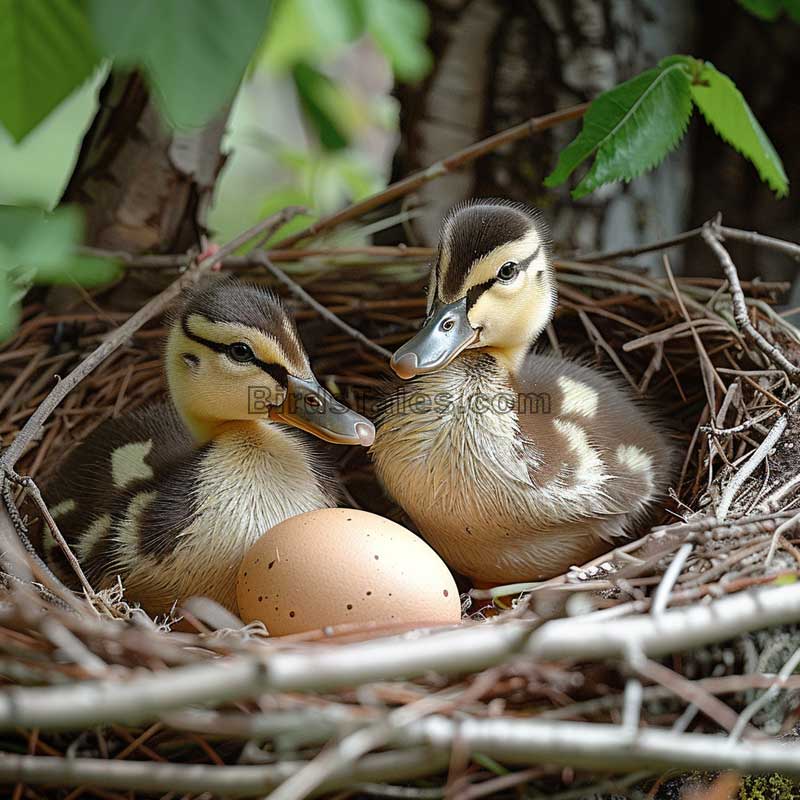
Social and Migratory Patterns
Ducks are social creatures and often seen in large flocks.
They communicate through sounds and body language.
Key aspects of their social and migratory behaviors:
- Flock dynamics: Ducks stay in flocks for protection and social interaction. In flocks, they can alert each other of danger and find food more efficiently.
- Migration: Many duck species migrate to find better breeding or feeding grounds. Migration routes can be thousands of miles long, often crossing continents. Northern Hemisphere ducks usually migrate south in winter and return north in spring.
Ducks use visual landmarks and the sun’s position to navigate during migration.
Their strong wings and endurance enable these long journeys.
Physical Characteristics of Ducks
Ducks boast a variety of unique physical traits that help them thrive in diverse environments.
From their waterproof feathers to their specialized bills, each feature plays a vital role in their survival.
Unique Feather Structure
Ducks have feathers designed to keep them dry and warm.
The secret lies in the oil produced by their preen gland, located near the base of their tail.
This oil, spread over their feathers during grooming, makes them waterproof.
Key points about their feathers:
- Waterproofing: The oil coating prevents water from soaking through, keeping ducks buoyant and warm.
- Insulation: Beneath the outer feathers, ducks have a layer of soft down feathers. These down feathers trap air, providing excellent insulation against cold water.
- Molting: Ducks shed and replace their feathers in a process called molting. This usually happens once or twice a year, ensuring their plumage remains in top condition.
Their feather structure is essential for survival, especially in cold and wet habitats.
Bill and Feeding Adaptations
A duck’s bill is a multipurpose tool, perfectly adapted to its diet and feeding habits.
Important features of duck bills:
- Shape: The shape of a duck’s bill varies depending on its feeding method. Dabbling ducks have broad, flat bills, while diving ducks have more pointed bills.
- Lamellae: Inside the bill, ducks have comb-like structures called lamellae. These help filter food from water and mud.
- Nail: At the tip of the bill, there’s a hard, pointed nail. This aids in digging and foraging.
Ducks also have highly sensitive bills, packed with nerve endings that help them detect food.
Ducks in Different Habitats
Ducks are incredibly adaptable, thriving in various habitats from serene freshwater ponds to the rugged coasts.

Freshwater Ducks
Freshwater environments like ponds, lakes, and rivers are home to many duck species.
These habitats provide abundant food and safe nesting sites.
Common freshwater ducks:
- Mallard: The quintessential duck, mallards are often found in urban parks and rural ponds alike. They are highly adaptable and can thrive in diverse environments.
- Teal: Smaller than mallards, teals prefer shallow waters where they can easily dabble for food.
Freshwater ducks rely on the vegetation and aquatic life in these environments for sustenance.
Coastal and Marine Ducks
Some ducks are perfectly at home in coastal and marine habitats.
These ducks are often more robust, adapted to withstand harsh weather and salty conditions.
Examples include:
- Eider: Known for their soft down feathers, eiders nest along rocky coasts and dive for shellfish.
- Scoter: These sea ducks are strong swimmers and divers, commonly found along coastlines and estuaries.
Coastal and marine ducks often have a diet rich in fish and invertebrates, requiring them to dive deep and forage extensively.
Interesting Facts About Ducks
Ducks are full of surprises, with many unique traits and behaviors that make them fascinating to study.
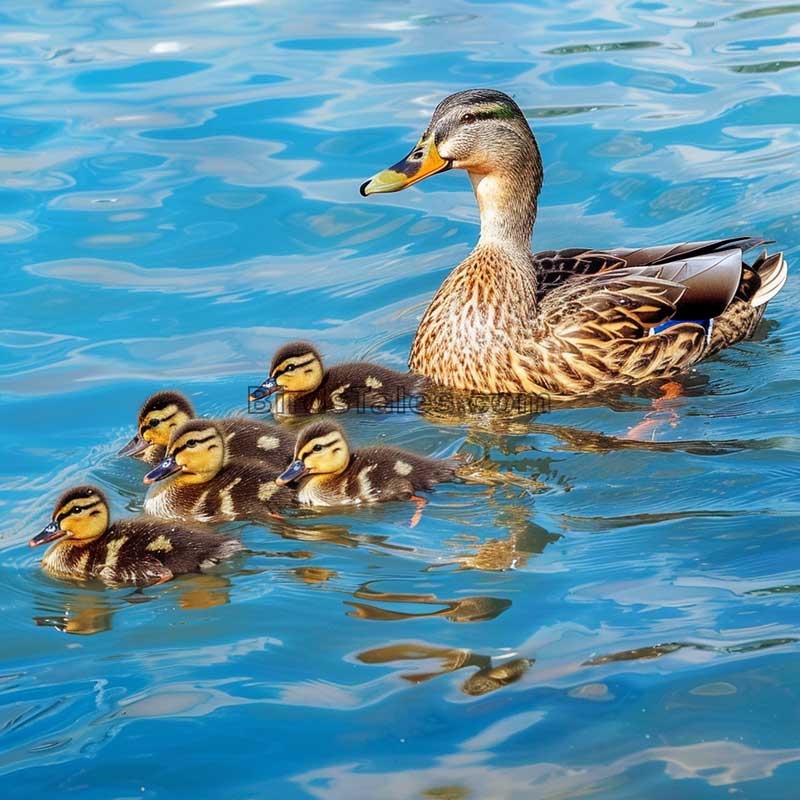
Unique Communication Methods
Ducks have a variety of sounds and signals they use to communicate.
Key points about their communication:
- Quacking: While the quack of a female mallard is well-known, not all ducks quack. Some make whistles, coos, and even grunts.
- Body language: Ducks also use body language to communicate. Head bobbing, wing flapping, and tail wagging all convey different messages.
- Mother calls: Mother ducks have special calls to lead their ducklings and keep them safe.
These communication methods are crucial for their social interactions and survival.
Ducks as Pets
Keeping ducks as pets can be rewarding but requires careful consideration.
Important aspects of keeping pet ducks:
- Space: Ducks need ample space to roam and a pond or pool for swimming.
- Diet: A balanced diet is essential. Pet ducks should have access to grains, greens, and a protein source.
- Shelter: Ducks need a secure shelter to protect them from predators and harsh weather.
Ducks are social animals, so it’s best to keep more than one.
They can be quite entertaining, waddling around and quacking away.
Conclusion
Ducks are remarkable birds with a range of fascinating traits.
From their varied species and behaviors to their unique physical characteristics, they offer endless intrigue.
Appreciating these feathered friends can enrich our understanding of the natural world.
So next time you see a duck, take a moment to observe and admire its unique charm.


